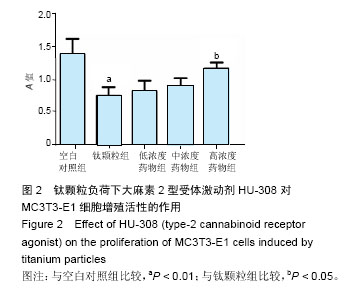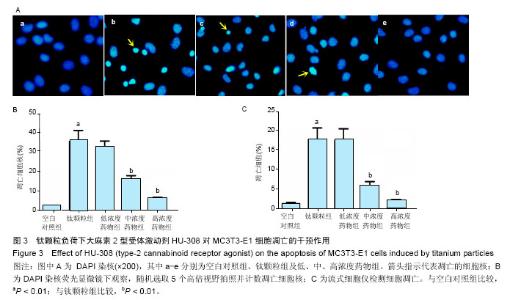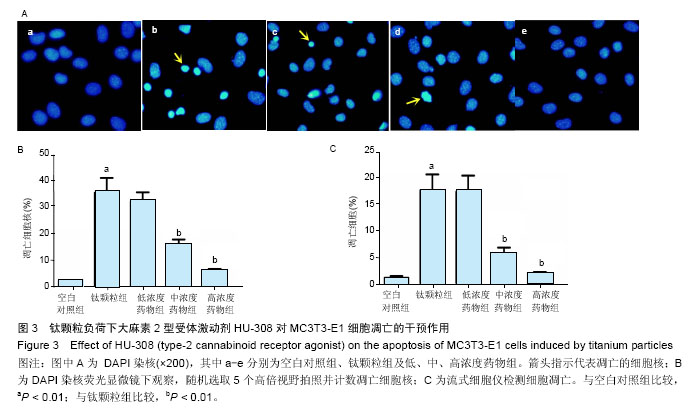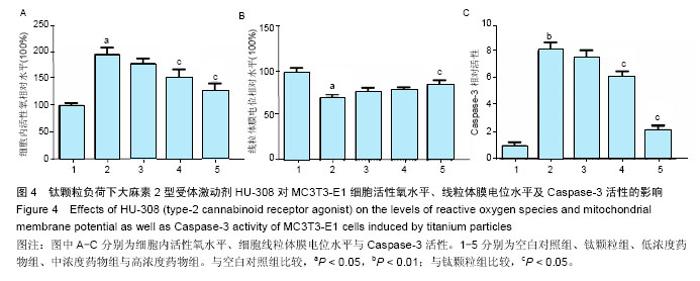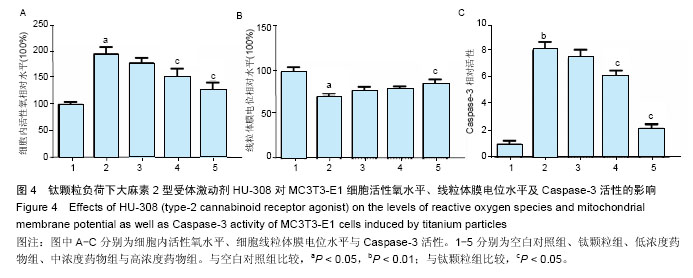| [1]Maloney WJ,Smith RL,Schmalzried TP,et al.Isolation and characterization of wear particles generated in patients who have had failure of a hip arthroplasty without cement. J Bone Joint Surg. 1995;77:1301-1310.
[2]Geng D,Xu Y,Yang H,et al.Protection against titanium particle induced osteolysis by cannabinoid receptor 2 selective antagonist.Biomaterials. 2010;31(8): 1996-2000.
[3]Bi Y,Seabold JM,Kaar SG,et al.Adherent endotoxin on orthopedic wear particles stimulates cytokine production and osteoclast differentiation.J Bone Miner Res.2001;16(11):2082-2091.
[4]MacQuarrie RA,Fang Chen Y,Coles C,et al.Wear‐particle–induced osteoclast osteolysis: The role of particulates and mechanical strain.J Biomed Mater Res B Appl Biomater.2004;69(1):104-112.
[5]Kwon SY,Lin T,Takei H,et al.Alterations in the adhesion behavior of osteoblasts by titanium particle loading: inhibition of cell function and gene expression. Biorheology.2001;38:161-183.
[6]Pioletti DP,Leoni L,Genini D,et al.Gene expression analysis of osteoblastic cells contacted by orthopedic implant particles.J Biomed Mater Res. 2002;61: 408-420.
[7]Ridge SA,Ford L,Cameron GA,et al.Endocannabinoids are produced by bone cells and stimulate bone resorption in vitro.Bone.2007;40 Suppl.1:S120.
[8]Whyte LS,Ford L,Ridge SA,et al.Cannabinoids and bone: endocannabinoids modulate human osteoclast function in vitro.Br J Pharmacol. 2012;165(8):2584-2597.
[9]Idris AI,Sophocleous A,LandaoBassonga E,et al.Cannabinoid receptor type 1 protects against age-related osteoporosis by regulating osteoblast and adipocyte differentiation in marrow stromal cells.Cell Metab.2009;10(2):139-147.
[10]Idris AI,Sophocleous A,Landao Bassonga E,et al. Regulation of bone mass, osteoclast function and ovariectomy-induced bone loss by the type 2 cannabinoid receptor. Endocrinology. 2008;149(11): 5619-5626.
[11]Ofek O,Karsak M,Leclerc N,et al.Peripheral cannabinoid receptor, CB2, regulates bone mass.Proc Natl Acad Sci U S A.2006;103(3):696-701.
[12]Rossi F,Bellini G,Luongo L,et al.The endovanilloid/endocannabinoid system: a new potential target for osteoporosis therapy.Bone. 2011; 48(5):997-1007.
[13]Qiu S,Zhao F,Tang X,et al.Type-2 cannabinoid receptor regulates proliferation, apoptosis, differentiation, and OPG/RANKL ratio of MC3T3-E1 cells exposed to Titanium particles.Mol Cell Biochem.2015; 399(1-2): 131-141.
[14]Sophocleous A,Landao-Bassonga E,Van't Hof RJ,et al.The type 2 cannabinoid receptor regulates bone mass and ovariectomy-induced bone loss by affecting osteoblast differentiation and bone formation. Endocrinology.2011;152:2141-2149.
[15]Budihardjo I,Oliver H,Lutter M,et al. Biochemical pathways of caspase activation during apoptosis.Ann Rev Cell Dev Biol.1999;15:269-290.
[16]Gaffney CJ,Shephard F,Chu J,et al.Degenerin channel activation causes caspase-mediated protein degradation and mitochondrial dysfunction in adult C. elegans muscle.J Cachexia Sarcopenia Muscle.2016; 7(2):181-192.
[17]Diaz-Aguirre V,Velez-Pardo C,Jimenez-Del-Rio M.Fructose sensitizes Jurkat cells oxidative stress-induced apoptosis via caspase-dependent and caspase-independent mechanisms.Cell Biol Int. 2016. doi: 10.1002/cbin.10653.[Epub ahead of print]
[18]Saidani C,Hammoudi-Triki D,Laraba-Djebari F,et al.In vitro studies with renal proximal tubule cells show direct cytotoxicity of Androctonus australis hector scorpion venom triggered by oxidative stress, caspase activation and apoptosis.Toxicon.2016;120:29-37.
[19]Lü P.Inhibitory effects of hyperoside on lung cancer by inducing apoptosis and suppressing inflammatory response via caspase-3 and NF-κB signaling pathway. Biomed Pharmacother. 2016;82:216-225.
[20]Chen MF,Huang SJ,Huang CC,et al.Saikosaponin d induces cell death through caspase-3-dependent, caspase-3-independent and mitochondrial pathways in mammalian hepatic stellate cells.BMC Cancer.2016; 16(1):532.
[21]Lee NR,Park BS,Kim SY,et al.Cytokine secreted by S100A9 via TLR4 in monocytes delays neutrophil apoptosis by inhibition of caspase 9/3 pathway. Cytokine. 2016 ;86:53-63.
[22]Pei B,Yang M,Qi X,et al.Quercetin ameliorates ischemia/reperfusion-induced cognitive deficits by inhibiting ASK1/JNK3/caspase-3 by enhancing the Akt signaling pathway.Biochem Biophys Res Commun. 2016. pii:S0006-291X(16)31190-1.doi: 10.1016/j.bbrc.2016.07.068. [Epub ahead of print] |

